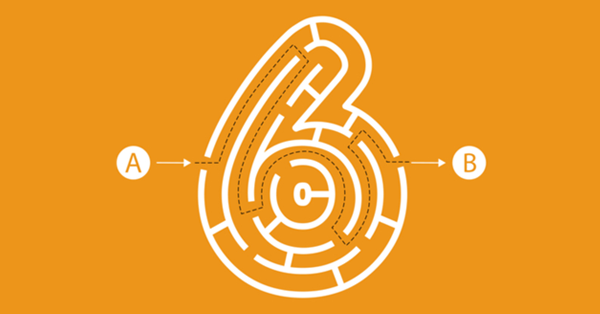A one-week snapshot of bank content marketing activity
Last week we posted that we were looking at the actual ‘what’ behind a random sampling of fifteen banks' social marketing efforts, specifically reviewing the industry's top used social media platforms: LinkedIn, Twitter, Facebook and YouTube.
As a refresh, the fifteen banks we observed were evenly divided into three segments:
- Five traditional national and super regional US banks
- Five traditional community and regional US banks (generally under $10 billion in assets); and
- Five non-traditional banks (virtual banks with no branches)
Again, we know this isn’t a scientific study (by the way, we don’t have dozens of interns around to surf sites and log activity – we did the work ourselves) and that the timing around Labor Day wasn’t picked for its height of social media activity levels. But even so, we found some trends that were at least interesting to us – and hopefully some of you as well.
So what did we observe from the social and content marketing efforts of 15 banks?
- First of all, if you haven't already, develop a social media/content marketing strategy. As we noted in our post last week, only 37% of surveyed banks have a documented content marketing strategy – which we know really means that only 37% have a strategy. From our small survey sample, 37% seems about right. We found that for most banks, content is often random and not very impactful. Many times it was simply a form of self-promotion - a kind of ‘look at me’ play.
- Pushing products via social media channels may be a form of channel marketing extension but can't be all you use them for. Remember, these are not the types of posts that consumers get excited about and go viral (unless you're promoting the new Chase Sapphire Reserve Card!). Even more surprising to us - about 25% of posts did not include a call-to-action to allow the viewer to take action or learn more. With the top metric for measuring content marketing effectiveness being Website Traffic (71% in fact), it seemed to be a major gap to not provide potential customers with the opportunity to do just that.
- Despite all of the claims about the digital experience – people and relationships matter! In our survey, the level of sharing increased at least 2x when a specific human-based element was demonstrated or highlighted - content such as a customer testimonial or a video showing actual customer interactions. These can be very powerful, which gets us to our next observation.
- Video, done well, is the most effective channel, hands down! Note that done well is the key. The banks that leverage video well do so in a very thoughtful and strategic way - keying in on emotions, not on transactions. In fact, one bank we were watching had 10x the engagement on Facebook (likes/shares) on a video post compared to their other posts that week. We aren’t talking about using video to show customers how to use an ATM or activate their debit card, but demonstrating the core of your brand. Why a bank is passionate about the things they are passionate about shines through video in a way that sharing a static post just can’t.
- Original content is more effective and gets more attention than reposted content. In many ways, a repost may be okay for your personal network to show what has caught your attention but not for an organization. If a key metric for the success of your efforts is engagement on your own website, consider how your posts can make that happen. What differentiates your bank from others in your market? If your social content strategy is just to scan the web and repost some provocative headlines, you may want to rethink your efforts. Recall from our initial post – all you get is 15 seconds or less. We just read the headline and who posted or reposted it and then move on.
- Monitor your bank’s social media channel activity and use the platforms' unique qualities to cross market your social content offerings. A few banks we followed are heavy users of video since that most effectively conveys their core message - but they also use other content channels to both promote that video content by providing links and support/reinforce similar themes by creating content specifically for that social media channel. Knowing how your audience wants to be spoken to based on channel preferences can only benefit your message.
- Related to taking advantage of the platforms' unique qualities, there is also an opportunity to take advantage of the platforms' intended uses and audiences. While LinkedIn's key value proposition is connecting professionals and providing access to business-related content and information, we found very few examples of banks sharing content geared around business products and support. Instead, we saw similar messaging to what they were sharing on Facebook: consumer product promotions, guidance for consumers, PR for bank community outreach - and of course job listings. Knowing that your audience is focused on professional needs while using LinkedIn, it feels like a lost opportunity to not build a distinct content strategy around your business audience for that platform.
- Finally, consider the role of your bank’s employees and leadership in your social media strategy. Particularly for community and regional banks and some non-traditional players, a short list of re-tweets, reposts or likes from the same employees each time may show enthusiasm from these folks but after a while you clearly aren’t engaging others outside of those that already know you. Think about engaging your employees to find out how they use social media – do they discuss the company they work for, talk about what your bank is doing in the market? We particularly like this post, which details some Dos and Don'ts of Employee Participation in Content Marketing.
So what does this all mean? Clearly, there's a wide range of social and content marketing activity in the banking industry right now – so quantity doesn’t appear to be an issue. Some of the banks that are doing it well (from our perspective) are doing so because they have worked to develop a company persona that resonates across these channels and one which customers, prospects and employees can relate to. For others, it is a work in progress because marketing through these channels is still relatively new for most banks – even though they aren't new to the marketplace!
As bank transaction mobility continues to increase, more effective use of social media channels will be critical to support a consistent user experience. The key at this point is to document your strategy, even if your ability to execute effectively isn’t in place yet.




![[3] Tips to Maximize Your Budget by Improving Your Bank's Targeting](https://www.bkmmarketing.com/hubfs/Businessman%20looking%20forward%20with%20binoculars%20cloudy%20background%20and%20graphs%2c%20charts%20around.jpeg)


SUBMIT YOUR COMMENT